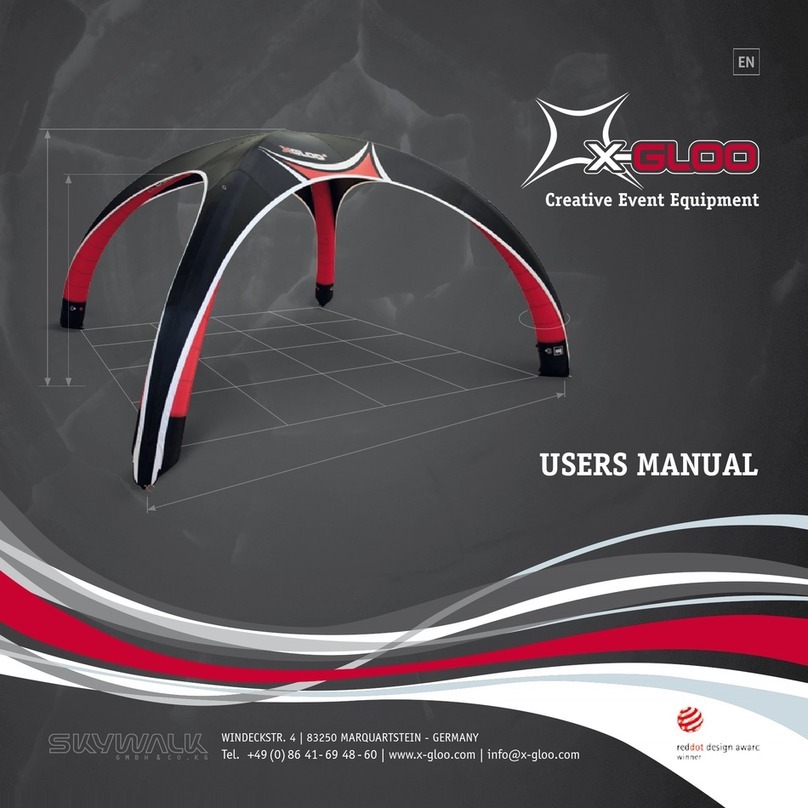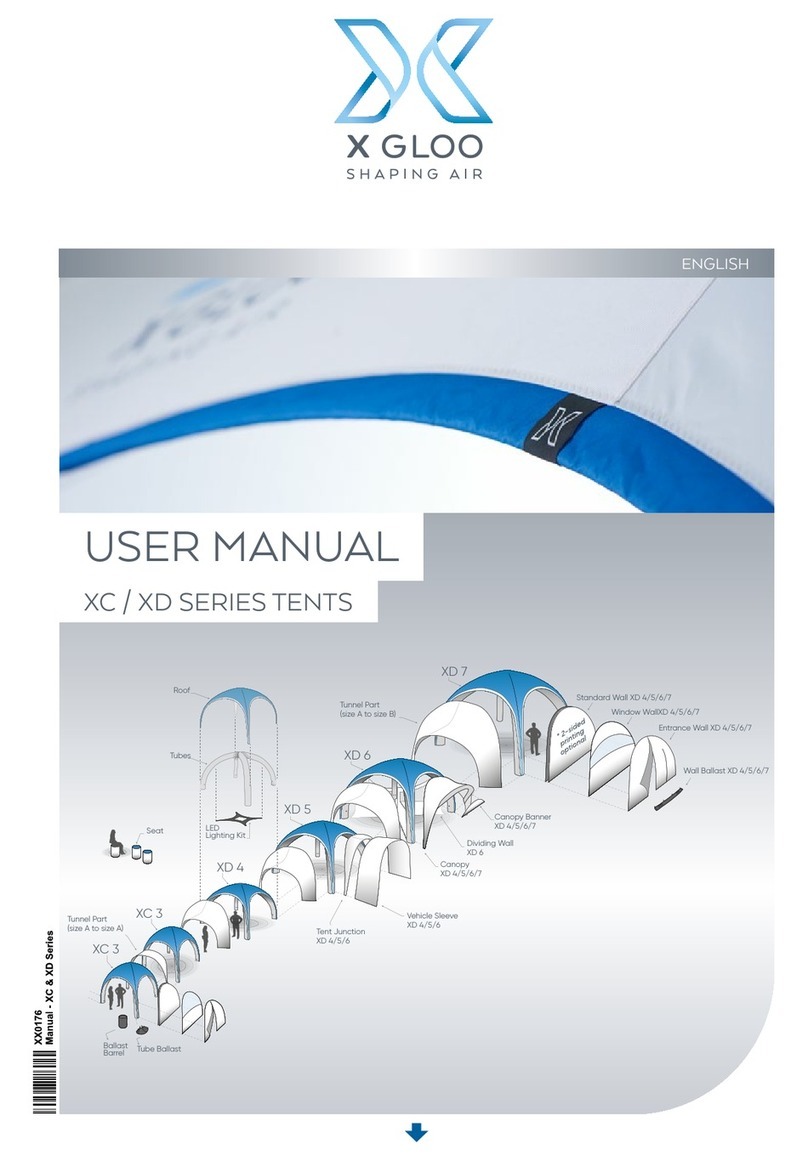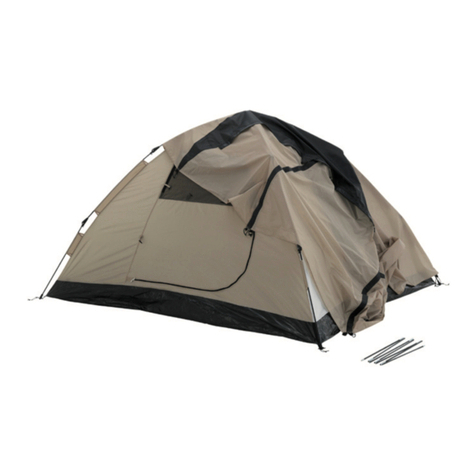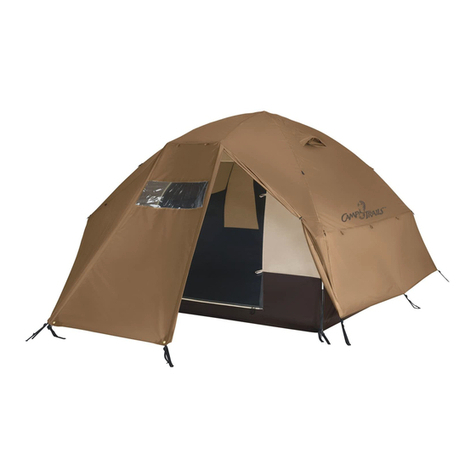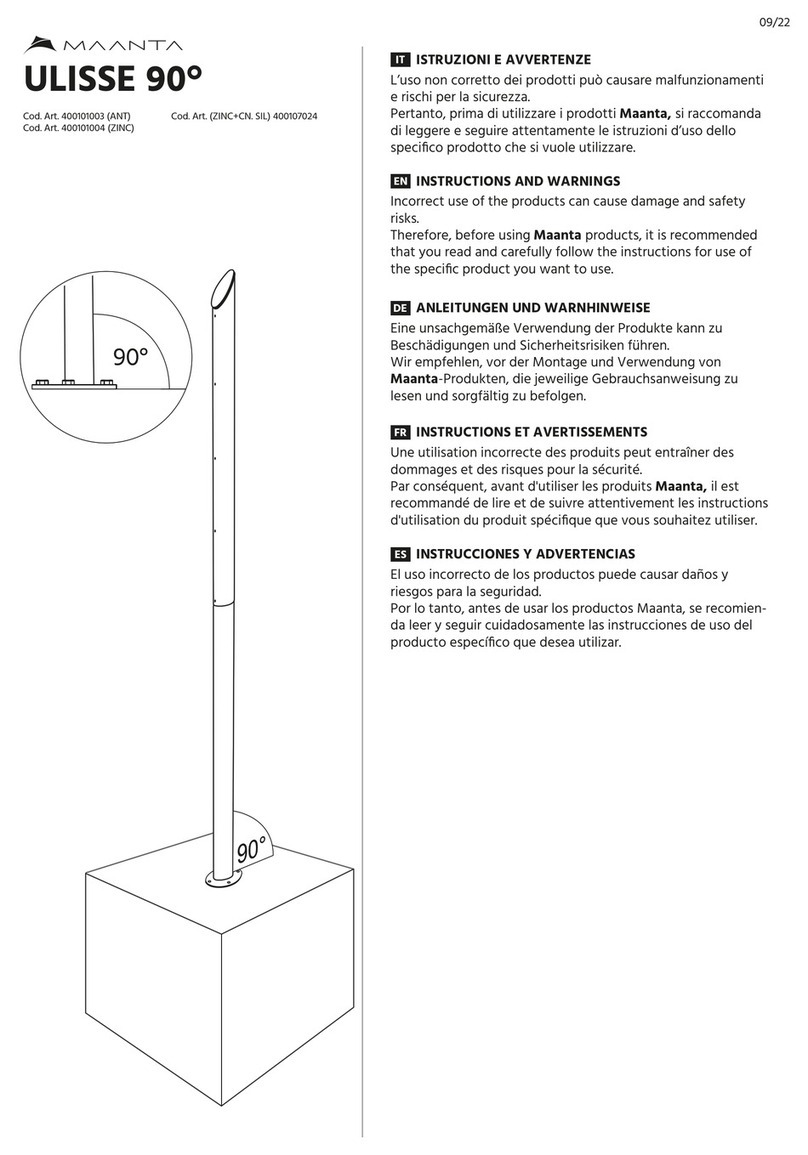
8X GLOO®•Windeckstr. 4 •83250 Marquartstein •Germany
4.1 TUBE BALLASTS
Each Tube Ballast Set includes four ballasts. Each ballast
contains a water bladder for filling with water.
4.1.1 FILLING WITH SAND / GRAVEL
• If filling the ballasts with sand or gravel, the water blad-
ders must first be removed so that they do not become
damaged.
4.1.2 FILLING WITH WATER
• Open the ballast cover and pull out the water bladder
until the fill valve is visible.
• Included in the Tube Ballast Set are a hose and various
faucet adapters.
• Attach the hose to the faucet using the correct
adapter.
• Open the fill valve, insert the other end of the hose and
completely fill the bladder with water.
• Once full, remove the hose and close the valve and the
velcro on the ballast cover
• In windy conditions, be sure to orient the tent against the wind so that it oers the least
wind resistance. Canopies, in particular, should not be aligned facing into the wind, nor
should open sides of the tent face into the wind when the side of the tent facing away from
the wind is closed with a wall. Wind loads can be significantly reduced by removing the walls
and canopies.
• Exposure to wind gusts which exceed the maximum permissible wind speed can lead to
structural damage of the tent that is not covered by the warranty.
• If weather conditions drastically deteriorate, all valves must be opened to let the air out of
the tent and thus avoid any major damage. The deflated tent should be weighed down to
prevent it from being taken by the wind.
water bladder
X GLOO Ballast system per column
size wind speed 15 km/h wind speed 30 km/h
XE 4 1x column ballasting 1x ballasting barrel
XE 5 1x column ballasting 1x ballasting barrel
XE 6 2x column ballasting 1x ballasting barrel
D
L T
THRUST (D) [daN] BOOST (L) [daN]RESULTING POWER (T) [daN]
size wind speed
30 km/h 40 km/h 60 km/h 30 km/h 40 km/h 60 km/h 30 km/h 40 km/h 60 km/h
XEE 4 24,2 51,7 115,0 11,3 39,6 60,8 35,5 68,0 175,8
XEE 5 37,0 79,1 175,9 17,6 42,0 195,0 54,7 121,2 271,0
XEE 6 54,1 115,6 257,1 25,4 60,6 136,8 79,6 176,2 305,7
size
TENT SIZE
STORAGE AREA
INCL. SIDE WALL
XEE 4 8,5m2 (91.5 ft2)
XEE 5 13m2 (139.9 ft2)
XEE 6 19m2 (204.5 ft2)
PPOOWWEERRSS
BBAASSIICCSS:: - wind speed:: 1 m/s = 3.6 km/h
- airtightness: 1.224 kg/m
- ddrag coefficient: 1 (safety factor of 1.2; estimated actual drag coefficient of 0.6)
- ccoefficient of friction between the ballast barrel and the subsurface:
1 (material: rubber / PVC - asphalt)
wind speed wind speed wind speed wind speed wind speed wind speed wind speed wind speed






